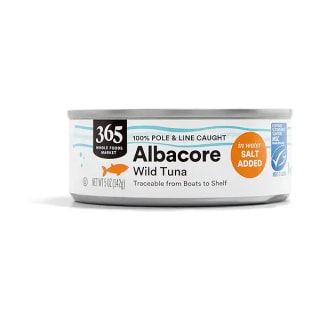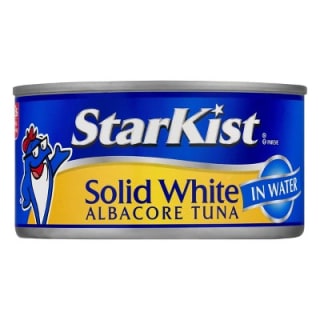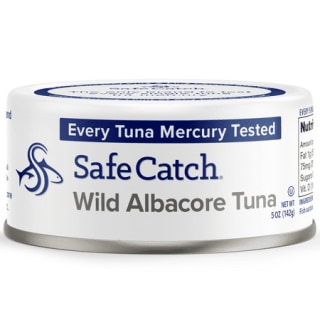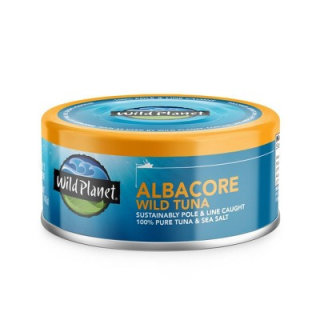
Sometimes my heart breaks for the ever-so-humble canned tuna. I feel like it’s been dismissed as cat food (the packaging doesn’t help) or something you’d only eat during a zombie apocalypse as a last resort.
The reality is that canned tuna can make a wonderful lunch when combined with condiments and added to your carb of choice: bread, pasta, rice … the possibilities are seemingly endless. In fact, you can elevate the fish to create some pretty epic dishes that are worthy of a permanent spot in your weekly lunch or dinner rotation.
Mark Majewski, executive chef of Sheraton Maui Resort and Spa, agrees. The self-proclaimed tuna fish lover was even tasked with incorporating the ingredient into his cuisine while studying to be the professional chef he is today.
“During my time in culinary school, we were given a challenge to prepare something elevated using canned tuna,” he reveals. “Utilizing the same ingredients you’d normally use to make a crab cake, I switched out the crab for canned tuna and served alongside lemon, caper, and dill remoulade. The final dish was amazing!”
Aside from its versatility, canned tuna is inexpensive, high in protein and shelf-stable. That said, it’s critical to only purchase products that keep sustainability in mind. Overfishing can lead to ecosystem instability and, as a result, will drive up the affordable prices you currently see on grocery store shelves.
“Consumers want to look on the label for ‘hand-caught, troll-caught/trolling or pole/line-caught,” advises Majewski. “Any of these keywords show a sustainable method of catching the fish.”
“At Sheraton Maui Resort and Spa, we use local fishers and farmers as much as possible,” he adds. “With the abundance of local seafood in Hawaii, it’s actually easier to get sustainably caught seafood here than it is to find fish that was caught sustainably sourced from somewhere else.”
But since we can’t all live in or visit Hawaii, this taste test pits six of the most popular mainstream options you can find in the ultimate oceanic battle. And for consistency’s sake, I only tried albacore varieties packaged solo or in water (though I highly encourage alternatives in olive oil, Majewski’s personal favorite, because it “seals in the flavor and keeps the tuna tender.”)
Check out how the cans stacked up below when it came to taste and taste only.
Writer’s note: My interview with Majewski happened before the tragic fires in nearby Lahaina. While his hotel’s region of Kaanapali continues to debate when and how to open and welcome visitors, I highly encourage everyone to make a donation to these charities in the meantime.
I wasn’t going to tell ultra-mild Bumble Bee to buzz off because it definitely wasn’t the most horrible out of all of the mainstream options. It simply was the least memorable. And if the idea of consuming canned tuna fish still disgusts you (why are you here? lol) and you want to subject yourself to a bit of torture (no judgment, I guess), then this may be the one for you. It’s less potent, soft on the tongue, and can easily be masked by mayonnaise or anything else you want to incorporate as a flavor camouflage.
Chicken of the Sea Albacore Premium Tuna in Water
Don’t tell Jessica Simpson, but her favorite poultry — er, fish — brand ranked second to last on this list. Was this terrible? Absolutely not. Was it tasty? For sure! But did it stand out enough for it to rival my top three? No, unfortunately. There was absolutely nothing wrong with it except for … dun dun dun … the ever-so-dreaded texture inconsistencies. One can was complete mush while another was flaky and everything you could want in a doomsday bunker meal. Someone phone quality control because if they troubleshoot and fix things on the assembly line, it could easily edge out its Starkist competition.
StarKist Solid White Albacore Tuna in Water
I admittedly eat Starkist tuna more than the average human and am quite familiar with the brand. Large, firmer pieces make classic Starkist one of the more palatable of the bunch and I always appreciate its ability to stand up the best marinades, sauces and sandwich slices in my pantry. It does taste a bit mass-produced, though, whereas the ones below gave more gourmet vibes. And since I’m in my boujee era, this is just how the cookie crumbled.
365 by Whole Foods Albacore Wild Tuna in Water

Whole Foods’ take on tuna tasted the most pure, probably because it boasted one of the lowest sodium levels among its contenders. It also looked the prettiest with nearly fileted meat that didn’t appear as if it had been put through a janky food processor. My only gripe? The damn cans are impossible to open. If you suffer from arthritis or pain-ridden fingers, you’re going to practically need a crowbar to pry these bad boys open. And once you do, they may or may not have been worth the effort.
Safe Catch Wild Albacore Tuna
Aside from its not bone-dry texture (which is to be expected), I was most impressed by the company’s commitment to testing the mercury levels of every fish they take in. It allowed for me to nosh in peace without fearing the arrival of neurological symptoms like tremors and slurred speech. That said, its flavor was definitely on the fishier side, which was likely a result of not being diluted in water (like the winner). But this preparation didn’t bother me. In fact, it may be my new preference when it comes to canned tuna fish — as is and without anything thrown into the mix.
Wild Planet Albacore Wild Tuna
This didn’t benefit from water’s moisture, but the company does add sea salt, which gave it a slighter edge (because duh). And while many readers are going to slide into my DMs and read me for allowing a product with a special ingredient addition, it was simply too good not to include. So begone with your negativity — if you want a high-quality, sustainably sourced albacore tuna that just happens to come a little bit seasoned, Wild Planet is the can for you. And if you’re still salty about my No. 1 choice, why don’t you shake a little bit of that salt into the other six options on this list because they certainly could have benefitted from it. (Wild Planet does offer a “no salt added” can, as well, and it still would have ranked as my No. 1, by the way.)








